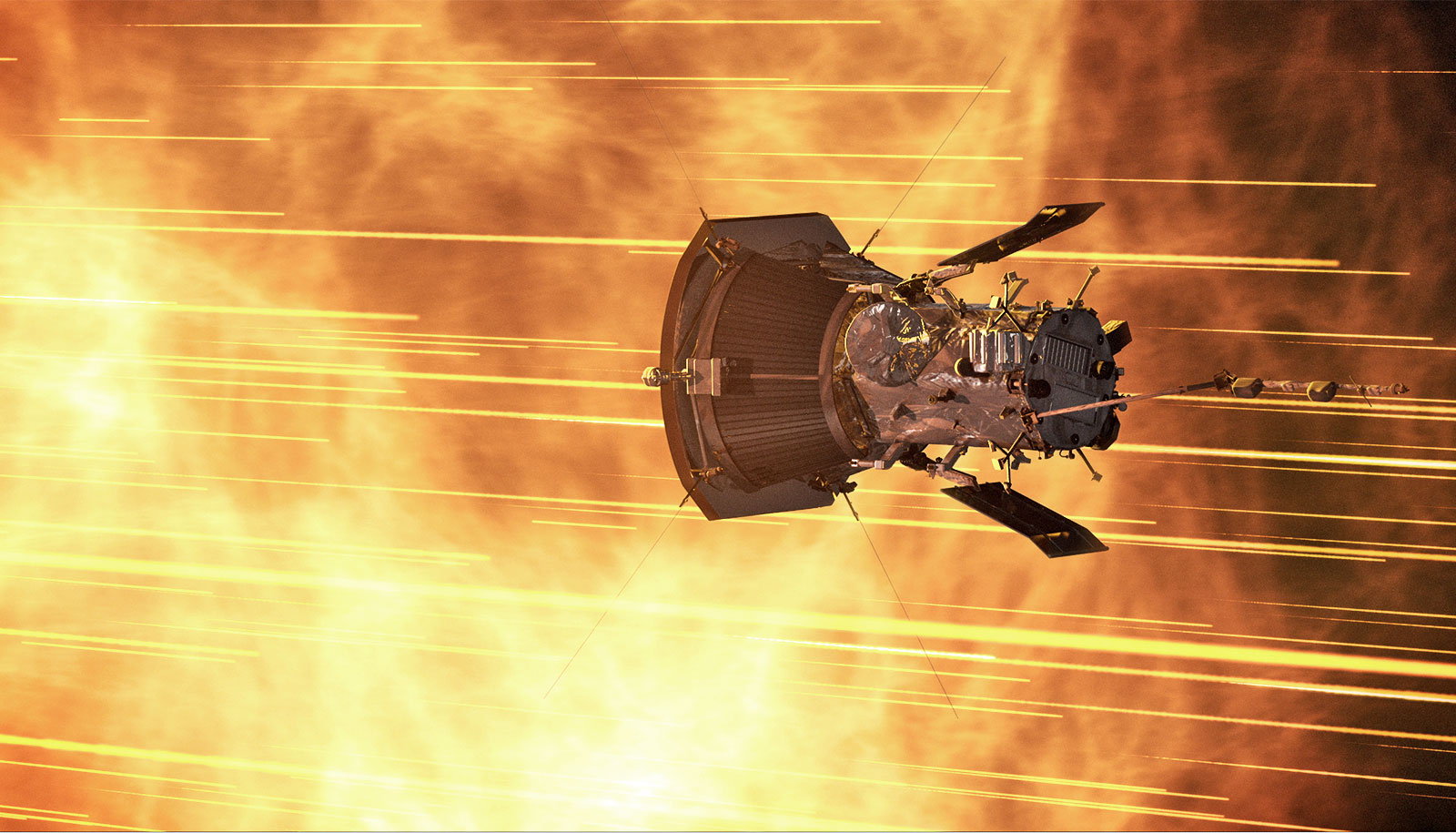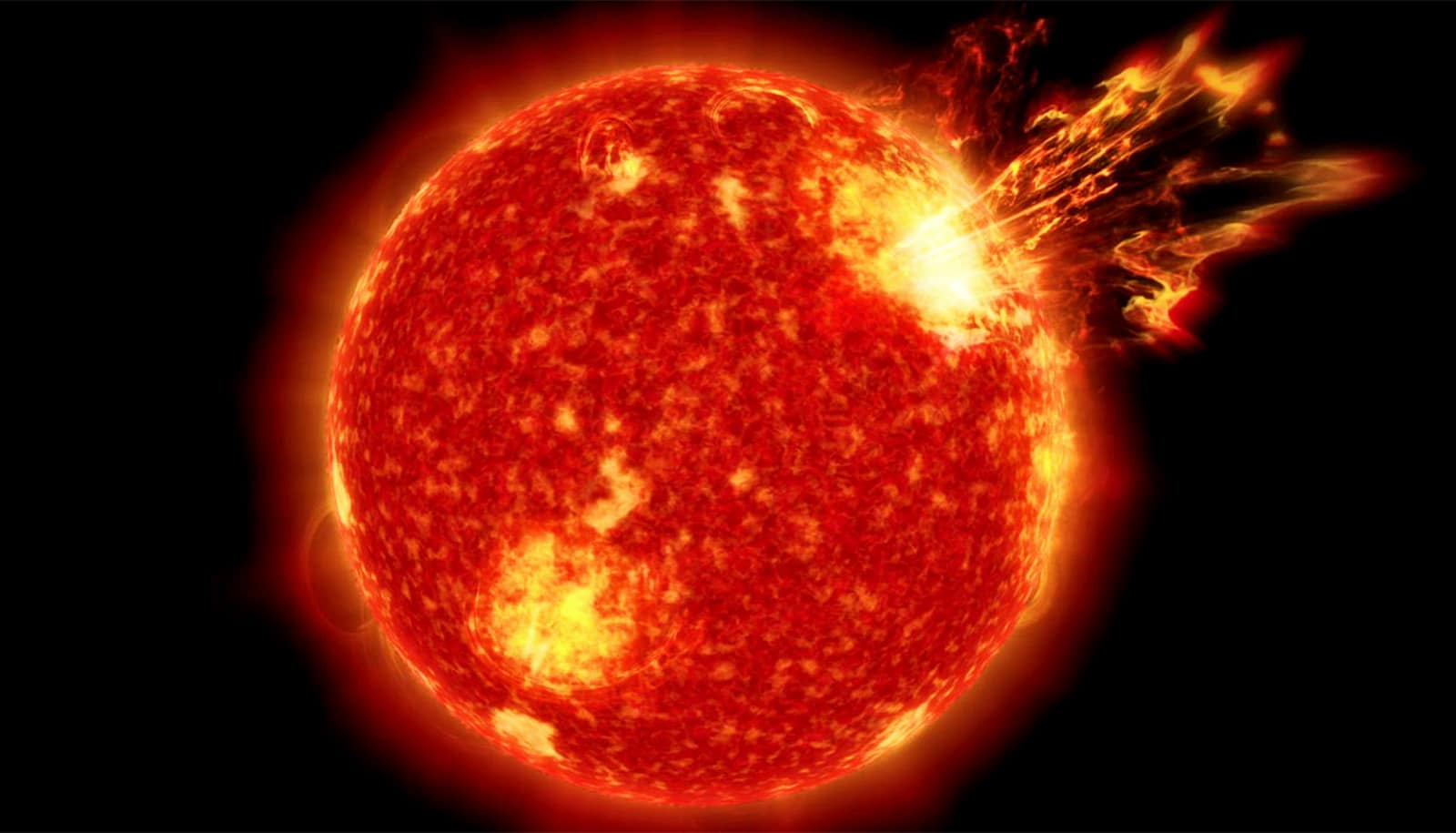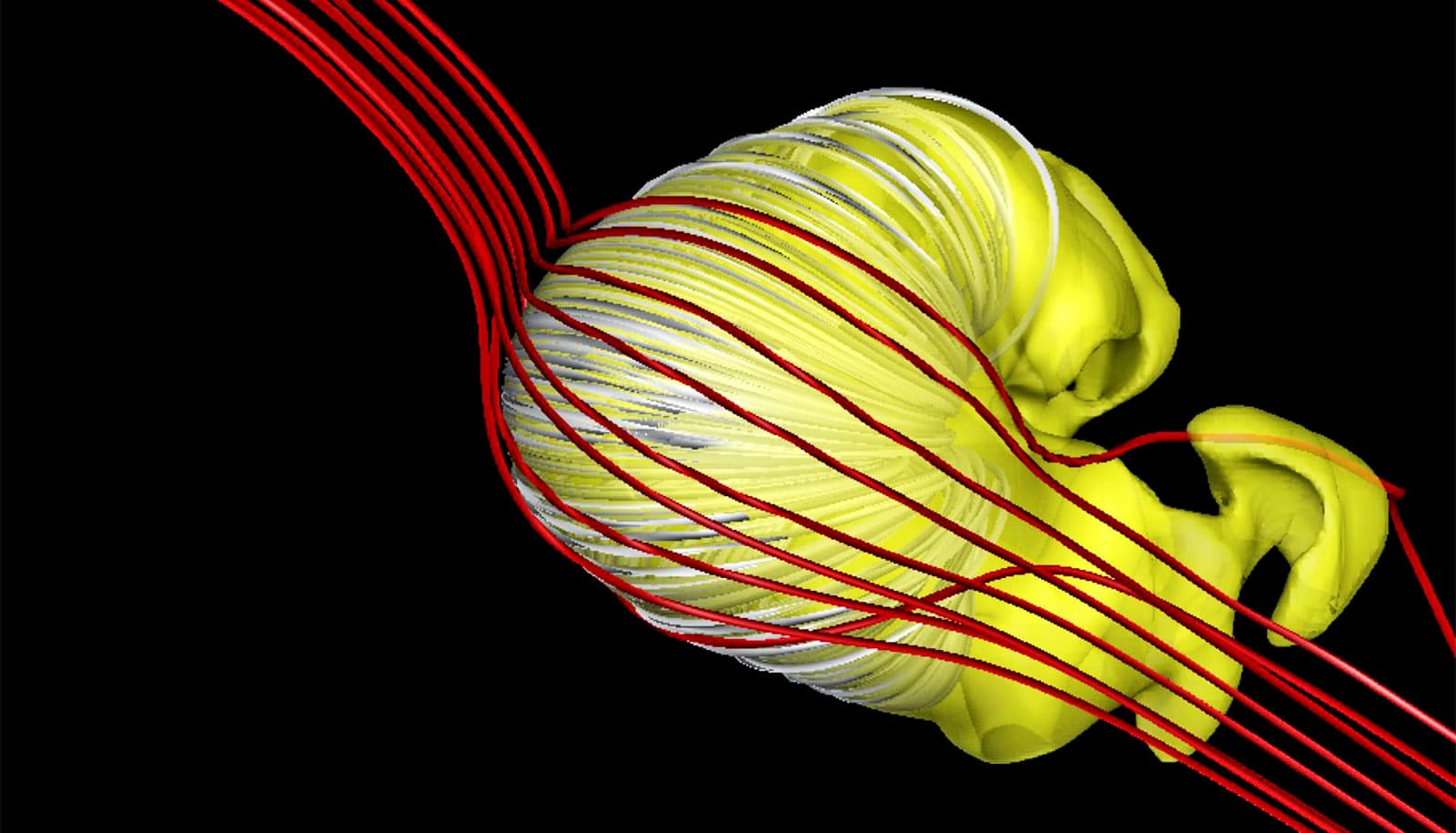Continued analysis of data from the Parker Solar Probe creates a clearer picture of the sun’s magnetic activity and may bolster our ability to predict dangerous solar events, according to a new study.
The more information that comes in, the more it all fits with theories researchers posited at the turn of the millennium. Those researchers pieced together an intricate picture of the sun’s workings long before Parker launched in August 2018, says Justin Kasper, professor of climate and space sciences and engineering at the University of Michigan.
“This isn’t like having the data and coming up with a theory that happens to line up with it,” says Kasper, who serves as principal investigator for Parker’s Solar Wind Electrons Alphas and Protons instrument suite. “This is possibly observational closure emerging on a theory that was put out two decades ago.”
A report in Astrophysical Journal Letters summarizes the new data and compares it with previous work.
Sensors aboard the spacecraft have produced data suggesting:
- The sun’s atmosphere, composed of plasma and magnetic fields, moves in a general global circulation pattern. The Parker Solar Probe can observe a small section at any given time.
- Close to the sun, solar wind—the outward stream of charged particles from the surface—is embedded with abrupt changes in magnetic field direction, called switchbacks, along which the solar wind flows at an accelerated speed.
- The global coronal magnetic field slides over the surface of the sun via a process called interchange reconnection—when closed loops of magnetic field sprouting from the sun’s surface explosively realign with open magnetic field lines that extend out into the solar system.
Each of these items reveals fundamental processes occurring at the sun and this understanding has practical applications here on Earth.
“What this gives us is insight into how the sun produces slow and fast solar winds,” Kasper says. “Defining that mechanism is key to predicting when a transition from slow to fast solar wind is going to strike Earth and create a geomagnetic storm.”
Those conclusions agree with predictions put forth in 1999 and 2001 research papers from Lennard Fisk, professor of space science at the University of Michigan and colleagues. One of those, Thomas Zurbuchen, is currently associate director of NASA’s Science Mission Directorate.
“It’s amazing to see Parker Solar Probe provide a missing puzzle piece to support and expand ideas we first thought about with spacecraft data from almost 25 years ago,” Zurbuchen says. “As Parker Solar Probe flies closer to the sun, I can’t wait to see what answers—and questions—we’ll learn next.”
A long time coming
When asked how solar physicists accepted his earlier work, Fisk offers a one word answer: “Badly.”
It offered possible explanations for how several different solar phenomena interact, but technology limited the data to verify such things. Effects of the near-sun phenomena were only observed in the more distant heliosphere, the region of space, including our solar system, that the solar wind influences.
In those earlier publications, Fisk theorized that, in different areas of the corona, so-called open magnetic lines that stretch from the surface of the sun out into space should circulate in a closed pattern, with motions both in the direction of and opposite to the sun’s rotation. He also posited that the individual interchange reconnection jumps would combine to permit overall motions of the corona over the surface of the sun.
Fisk found his first clues about the strange magnetic activity in the sun’s heliosphere after combing through data collected during the ESA/NASA Ulysses mission. Launched in 1990, Ulysses was the first spacecraft to pass over the sun’s poles. There, the spacecraft recorded particle radiation that originated at lower solar latitudes—a finding that suggested the magnetic field observed by Ulysses had to be in motion in the solar corona.
Workings of the sun
Since publication of those earlier papers, Fisk has moved on to other research projects. But his office neighbor just happened to be Kasper. And when Parker Solar Probe’s first data came rolling in last year, Fisk could see how it all fit together.
“Once you get confirmation of this basic process, all of a sudden, there are all of these implications for how the sun works, how its magnetic field works, and how the solar wind is accelerated,” Fisk says. “It gives you the opportunity to solve many other solar and stellar physics problems because now you have the basic mechanisms.”
As Parker Solar Probe continues to move closer to the sun, the mission will provide ample opportunity to test and validate the theory’s predictions.
Parker Solar Probe is part of NASA’s Living With a Star program, created to explore aspects of the sun-Earth system that directly affect life and society. NASA’s Goddard Space Flight Center in Greenbelt, Maryland, for NASA’s Science Mission Directorate in Washington manages the program. Johns Hopkins APL designed, built, and operates the spacecraft.
Additional researchers from the University of Michigan and the University of New Hampshire contributed to this work.
Source: University of Michigan


